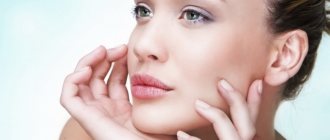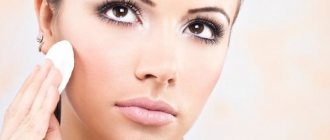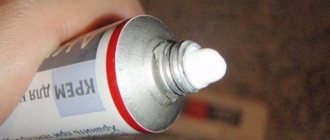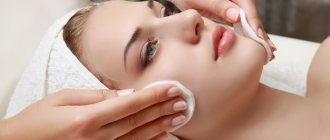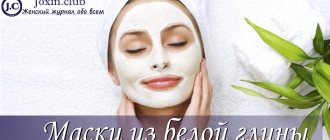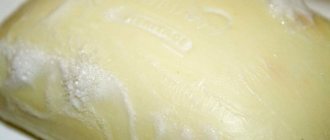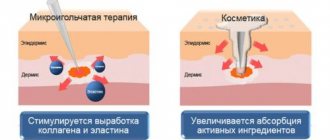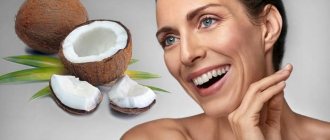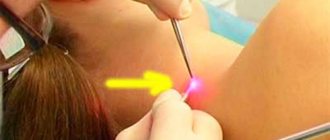Peeling (English Peel - “clean”) - exfoliation of dead skin on the face and body. In cosmetology, there are a huge number of its types, differing in composition and focus. Exfoliation is aimed at accelerating the regeneration of epidermal tissue, since during the procedure the upper (keratinized) layer of skin is removed, after which the cleansed dermis is filled with new cells and the blood supply increases.
Peeling has several classes according to the depth of penetration: superficial, medium and deep. As a rule, skin care after facial peeling is not complicated.
Why is it needed?
The upper layer of the epidermis consists of dead, keratinized scales, which gradually peel off and are removed during washing. If you constantly use cosmetics, they mix with its remains and form a fairly dense crust that does not allow the skin to breathe normally.
This leads to various problems:
- clogged pores;
- pimples and blackheads;
- excessive fat content;
- dilated capillaries;
- grayish complexion.
Removing this stratum corneum allows oxygen to reach the skin and allows cells to regenerate faster. The face immediately becomes refreshed and smooth. This cleansing can actually replace old cells with new ones and thus gives a rejuvenating effect.
Possible serious complications
The skin after chemical peeling remains very vulnerable and susceptible to adverse external influences for some time. This is why the risk of complications may increase, including the following:
- Persistent redness . This problem is considered quite serious, which may also indicate an allergy or individual intolerance to acid. Most often, this reaction occurs in those patients who have skin vessels close to them or have a tendency to rosacea.
- Allergic reaction . Intolerance to acids used during the procedure is quite rare, but care products can cause this problem. In this case, the skin begins to become covered with rashes, which is also often accompanied by itching.
- Skin hypopigmentation . If the exposure was excessive, then many melanocytes begin to die. For this reason, spotting appears on the face, which is difficult to correct.
- Hyperpigmentation . The main reason for the formation of dark spots on the face is exposure to ultraviolet radiation.
- Exacerbation of acne . One of the possible reactions to a chemical procedure may be the activation of the sebaceous glands.
- Herpes . This disease occurs or worsens due to decreased immunity, which most often occurs during the post-peeling period. If the virus has been in the body before, it is recommended to take preventive measures before chemical peeling.
Do I need to apply post-peel cream?
In the first days after a cosmetic procedure, the main goal is to restore and moisturize the damaged barrier layer. Damaged areas of the skin are treated with medications with healing, anti-inflammatory and hypoallergenic properties, prescribed by a cosmetologist. Products are used in the form of cosmetic foam or gel.
Around the third to fifth day, you can switch to creams containing moisturizing, restorative, protective substances and antioxidants. To speed up the recovery process, you need to choose cosmetic creams that contain:
- hyaluronic acid;
- amino acids and antioxidants;
- collagen;
- fruit acids;
- alginates;
- vitamins A, B, C, E;
- natural plant extracts;
- urea.
The cream should be applied after pre-treating the face with an alcohol-free tonic, using gentle movements, in a thin and even layer, without rubbing into the skin.
- In the winter season, it is necessary to use a nourishing cream with a light texture that will be quickly absorbed without leaving a sticky feeling.
- In summer, in addition to basic care, you should adhere to the rules of protection by applying sun cream.
How to care, what to apply: popular cosmetics
The injured epidermis requires special care during the recovery period.
Moisturizing, healing and proper nutrition are required. The following cosmetic products can provide this.
Hidraloe Aloe Gel
Hypoallergenic gel made in Spain. Well moisturizes, heals, tones the epidermis. Relieves irritation, redness, promotes rapid regeneration of the skin.
The gel is based on aloe extract, it has a light texture, and after application it gives a cooling effect. Suitable for all skin types.
Uriage Predicated
Antipruritic gel . Very soothing, relieves itching, irritation, dryness, feeling of tightness, discomfort.
The base is calamine and thermal water. The gel is hypoallergenic and suitable for all skin types.
Probiotic Balancing cream from Holy land cosmetics
Professional and expensive cosmetics, cream. It has a complex effect: enhances regeneration, eliminates traces of inflammation, protects cells from aggressive external factors.
The basis is probiotics, milk protein, lactose.
Kanebo Sensai Silk Soothing Cream
Cream from the silk series of the professional line of the cosmetic brand. Well moisturizes, nourishes, eliminates dryness, flaking, swelling, and tightness of the skin.
The base is mineral enzymes, white lupine extract and kikiyoku. Characteristics: very light, quickly absorbed texture, does not weigh down the epidermis, and does not leave any marks.
Important information about ready-made peeling products from such manufacturers:
- GiGi.
- PQ AGE.
- Arabia.
- Kosmoteros.
- Mediderma.
Panthenol and Bepanten
An affordable option for facial skin care after peeling : these drugs are available in different forms (cream, spray, ointment) and are used to treat abrasions, cracks, burns.
Effectively eliminate dryness, enhance regeneration and healing of the skin.
Makeup
This issue is especially acute for women. When can you start applying makeup after chemical peeling, and how to remove active peeling of the skin. Cosmetics - no way. Foundation or powder will only emphasize it even more, and at the same time clog the pores and neutralize the result of the procedure.
For the first week, even after superficial peeling, decorative cosmetics are prohibited. Starting from the second, you can do light makeup. The base for it is a high-quality moisturizer. After this, you can apply a thin layer of corrector to the desired areas and then apply a little loose transparent mineral powder.
What does your face look like after peeling?
After the stratum corneum is removed, a protective reaction is naturally observed on the face, which manifests itself in the form of:
- redness;
- peeling;
- swelling.
In view of this, doctors do not recommend going outside for the first days after the procedure. If medium or deep peeling was used, the skin may peel off in layers.
Under no circumstances should you rip off pieces of dead skin, but trim the loose dry film with scissors.
In addition to external manifestations, you may experience other sensations:
- itching;
- burning;
- tightness.
In some cases, facial expressions may even become difficult. This is fine. Remember that each person has an individual reaction to the procedure.


